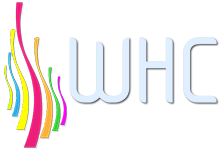Like the greatest music… Musicians are luckier than Rabbis
That was a point of view presented to me in a conversation I recently had with an international recording artist who has had hits right around the world. “You see”, he said, “when I give my performances and thousands of people come, they come to hear the same thing again and again. In fact,” he said, “when I introduce a new tune that they’re not familiar with, sometimes they’re disappointed because they want to hear their old favourites. But,” he said, “when you give a sermon, if you rehash anything that you’ve given before, your Kehllia – your community will give you the thumbs down.”
Rashi, however, disagrees. In parashat Eikav we have the well known second paragraph of the Shema which commences with the world ‘v’haya im shemoa tishmau’ – ‘and it shall come to pass when you hear what you have heard before.’ Rashi tells us that from here we learn how crucially important it is to regularly go over our Torah material so that we internalise its values and they should never leave us.
That is why in the first paragraph of the Shema the mitzvah of teaching Torah is ‘v’shinantam levanecha’ – ‘v’shinantam’
meaning ‘teach by rote’ – the double ‘nun’ in the middle of the word is a symbol of the repetitive nature of what we hear and what we study. And indeed that’s the background to the concept of having a ‘parashat hashavua’. In ancient times there were two different customers. One was a triennial system through which the Torah portions were broken up into smaller portions that covered a whole three year period. But the second custom became the pre-eminent one and is kept to this day – an annual cycle. Even though the weekly portions are longer, we recognise that we have to remind ourselves of the Torah content at least once a year.
We have that same idea expressed every time we complete a ‘masachet’ – a tractate of the Talmud. The event is called a ‘Hadran’, through which we make a statement saying we’ve now completed this masachet – we’re not just going to put it on a shelf and forget about it, but rather ‘hadran’ – we will return to it, we will go over its material again and again. The concluding mitzvah of the Torah, mitzvah number 613 is ‘v’atah kitvu lachem et hashira hazot’. Its a mitzvah to write the Torah’ – and the way that its put to us is: ‘and now you must write this melody’. The Torah is just like a great piece of music and we should hear it again, and again, and again!
Shabbat Shalom
Chief Rabbi Ephraim Mirvis

